An Air Force F-16 Fighting Falcon receives fuel from an Air Force KC-10 Extender during an early morning midair refueling mission supporting Operation Octave Quartz above Africa, Jan. 9, 2021.
Providing up-to-date information, news and original content on American Military issues.
An Air Force F-16 Fighting Falcon receives fuel from an Air Force KC-10 Extender during an early morning midair refueling mission supporting Operation Octave Quartz above Africa, Jan. 9, 2021.
Jan. 13, 2021
The Department of Defense is proud to announce the establishment of the Trusted Capital Digital Marketplace (TCDM). The program establishes trusted sources of funding for small and medium-sized providers of innovative defense-critical capabilities, offering long-term strategic benefit and combatting predatory investment practices.
On Jan. 13, 2021, Under Secretary of Defense for Acquisition and Sustainment Ellen M. Lord announced the launch of the Trusted Capital program’s digital marketplace. The TCDM is the gateway to an investment ecosystem designed to promote innovation and ensure access to trusted sources of capital for emerging technologies and critical capabilities required for national security.
Small and medium-sized businesses are vital to the defense industrial base (DIB) and the U.S. economy. Funding is paramount to the success of these firms and newly established businesses are susceptible to predatory investment. According to the current National Counterintelligence Strategy, our Nation’s “adversaries use front companies, joint ventures, mergers and acquisitions, foreign direct investment, and talent recruitment programs to gain access to and exploit U.S. technology and intellectual property.” The TCDM was developed to combat these predatory tactics and promote DIB capabilities.
“Trusted Capital works by providing opportunities for trusted financial institutions and qualifying companies to explore mutually beneficial partnerships in support of national security goals,” said Lord. “Aligned with the National Defense Strategy, the Trusted Capital program provides a more lethal force by creating new partnerships in order to reform the way the government will provide opportunity for innovation.”
Led by the Chief Information Security Officer for Acquisition and Sustainment (CISO(A&S)) Katie Arrington and Trusted Capital Director Colin Supko, the program connects vetted investors with qualifying domestic companies critical to the DIB. “I congratulate Ms. Arrington and the entire team involved in making this project a reality,” said Lord. “Through tools like the Trusted Capital Digital Marketplace, the Department of Defense and industry work together to make the Defense Industrial Base more secure.”
Trusted Capital’s military service stakeholders engage in the Marketplace by employing rapid acquisitions contracting vehicles to identify innovative capability providers deemed critical to their supply chains. Such “down-selected” providers of defense-critical and dual-use solutions are candidates for the Trusted Capital Marketplace. Interested capability providers with existing U.S. Government contracts should contact their contracting officer to request an invitation to apply; capability providers with no existing contracts can request a military service down-selection via the Trusted Capital public landing page (https://dodtrustedcapital.force.com).
About Trusted Capital
Trusted Capital (TC) is an Undersecretary of Defense for Acquisitions
and Sustainment (USD (A&S)) program to strengthen the defense
industrial base and limit threats to national security posed by
adversarial capital. Trusted Capital provides qualifying small to
medium-sized technology capability providers with a range of capital
solutions via “trusted” capital providers. To qualify, capability
providers and capital providers undergo a national security due
diligence process to limit foreign access to critical technology through
foreign investments. The TC strategy lays out three lines of effort:
Trusted Capital Digital Marketplace, Financial Incentives to invest in
national security solutions, and Military Innovation Tours with Venture
Capital/Private Equity Industry. To learn more about the Trusted Capital
program, visit the website at OUSD A&S - Trusted Capital (osd.mil).
Jan. 13, 2021
States and communities have a new tool to enhance national security and mission readiness, while making their economies stronger and more resilient. Today, the Department of Defense’s (DoD) Office of Local Defense Community Cooperation (formerly the Office of Economic Adjustment) released its Fiscal Year 2019 Defense Spending by State report to help states and communities better understand defense personnel and contract spending in their localities. This analysis helps state and local leaders assess a region’s dependence on defense spending and target assistance to support stronger communities and companies.
Defense spending rose in Fiscal Year 2019. DoD contract obligations and payroll spending in the 50 states and the District of Columbia increased by $64.3 billion, or 19 percent, over the prior year. This was driven by a 19 percent increase in DoD contract obligations. Personnel spending in the 50 states and the District of Columbia increased by 4 percent.
DoD contract obligations and payroll spending in the 50 states and the District of Columbia totaled $550.9 billion, which is 2.5 percent of the country’s gross domestic product (GDP). If the total spending were divided across every U.S. resident, it would amount to $1,678 per U.S. citizen. Of those funds, $403.9 billion (73 percent) were spent on contracts for products and services, while the remaining $146.9 billion (27 percent) paid the salaries of DOD personnel.
California, Virginia, and Texas topped the list of recipients for overall defense spending. However, Virginia, Hawaii, and Alabama ranked highest when considering defense spending’s impact on their states’ GDP.
The top ten states for total Defense spending in Fiscal Year 2019 were:
RANK STATE DEFENSE SPENDING (billions)
1. California $66.2
2. Virginia $60.3
3. Texas $54.8
4. Florida $29.8
5. Maryland $26.1
6. Connecticut $19.7
7. Pennsylvania $18.1
8. Washington $17.8
9. Alabama $16.0
10. Massachusetts $15.8
West Virginia, Maine and Wisconsin had the largest increases in DoD
spending from Fiscal Year 2018 to 2019. This was driven by large
contracts to Northrop Grumman in West Virginia, General Dynamics in
Maine, and Oshkosh Corp. and Fincantieri Marine Systems in Wisconsin.
These contracts were related to rocket motor production, shipbuilding
and military vehicle production.
The top ten recipients of Defense contracts in Fiscal Year 2019 were:
RANK COMPANY DEFENSE SPENDING (billions)
1. Lockheed Martin $45.6
2. Boeing $25.7
3. Northrop Grumman $19.5
4. General Dynamics $18.6
5. Raytheon $15.7
6. United Technologies $10.3
7. BAE Systems $7.3
8. Huntington Ingalls $6.7
9. Humana $6.7
10. L3 Technologies $4.9
All ten companies were on this list in Fiscal Year 2018. United
Technologies (47 percent), Northrop Grumman (41 percent), and General
Dynamics (29 percent) had the largest year over year increases.
“The report compiled by the Office of Local Defense Community
Cooperation can be a great tool to state and local officials,” said
Ellen Lord, Under Secretary of Defense for Acquisition and Sustainment.
“All of our work is aimed at supporting the National Defense Strategy
and this report is key as we look to continue defense reform and
modernization efforts.”
Patrick O’Brien, the Director of the Office of Local Defense Community
Cooperation, states the report is an opportunity for governors and local
officials to use its data to strengthen their defense presence and
supply chains. Mr. O’Brien further indicates “state and local officials
need to use this information to better understand the essential
continuum of investments across people, equipment, weapons systems, real
estate, and services required to maintain our National Defense. Across
these areas, they should determine if there are opportunities to further
develop workforce skills, enhance and improve innovativeness and buying
power, and partner to strengthen the resilience of our installations
and industrial base.”
Conducted between March and December 2020, the analysis primarily
entailed an examination of DoDfunded prime- and sub-award contract data
and defense personnel and payroll figures. Findings are drawn from an
array of sources, including the DoD’s Defense Manpower Data Center and
USAspending.gov, which is managed by the U.S. Department of the
Treasury.
The FY19 report, as well as previous years’ reports, can be found on the OLDCC website at: https://oea.gov/defense-spending-state-fiscal-year-2019.
Virginia National Guard soldiers stand guard in Washington, D.C., Jan. 11, 2021. National Guard soldiers and airmen from several states have traveled to Washington to provide support leading up to Inauguration Day.
Marines conduct a squad attack during the 3d Marine Division's rifle squad competition at Camp Gonsalves, Okinawa, Japan, Jan. 12, 2021. The competition tests jungle survival skills, basic infantry tactics, and excellence in weapons handling.
Navy Petty Officer 2nd Class Chance Coogle stands watch in the combat information center aboard the guided missile destroyer USS John S. McCain during operations in the South China Sea, Jan. 12, 2021.
Jan. 13, 2021 | BY Jim Garamone , DOD News
U.S. service members swear an oath to "support and defend the Constitution against all enemies foreign and domestic." The memo — signed by all eight members of the Joint Chiefs of Staff — stresses that commitment and the values behind it.
The memo, signed yesterday, said the actions in the Capitol "were inconsistent with the rule of law. The rights of freedom of speech and assembly do not give anyone the right to resort to violence, sedition and insurrection."
The memo stresses that the United States military "will obey lawful orders from civilian leadership, support civil authorities to protect lives and property, ensure public safety in accordance with the law, and remain fully committed to protecting and defending the Constitution of the United States against all enemies, foreign and domestic."
The chiefs said the attack on the Capitol — as members of Congress were performing their constitutional duties of counting the votes of the Electoral College — was a direct assault on the constitutional process.
"As service members, we must embody the values and ideals of the nation," the chiefs wrote. "We support and defend the Constitution. Any act to disrupt the constitutional process is not only against our traditions, values and oath, it is against the law. On January 20, 2021, in accordance with the Constitution, confirmed by the states and the courts, and certified by Congress, President-elect Biden will be inaugurated and will become our 46th commander in chief."
The chiefs urged service members all around the world to "stay ready, keep your eyes on the horizon, and remain focused on the mission. We honor your continued service in defense of every American."
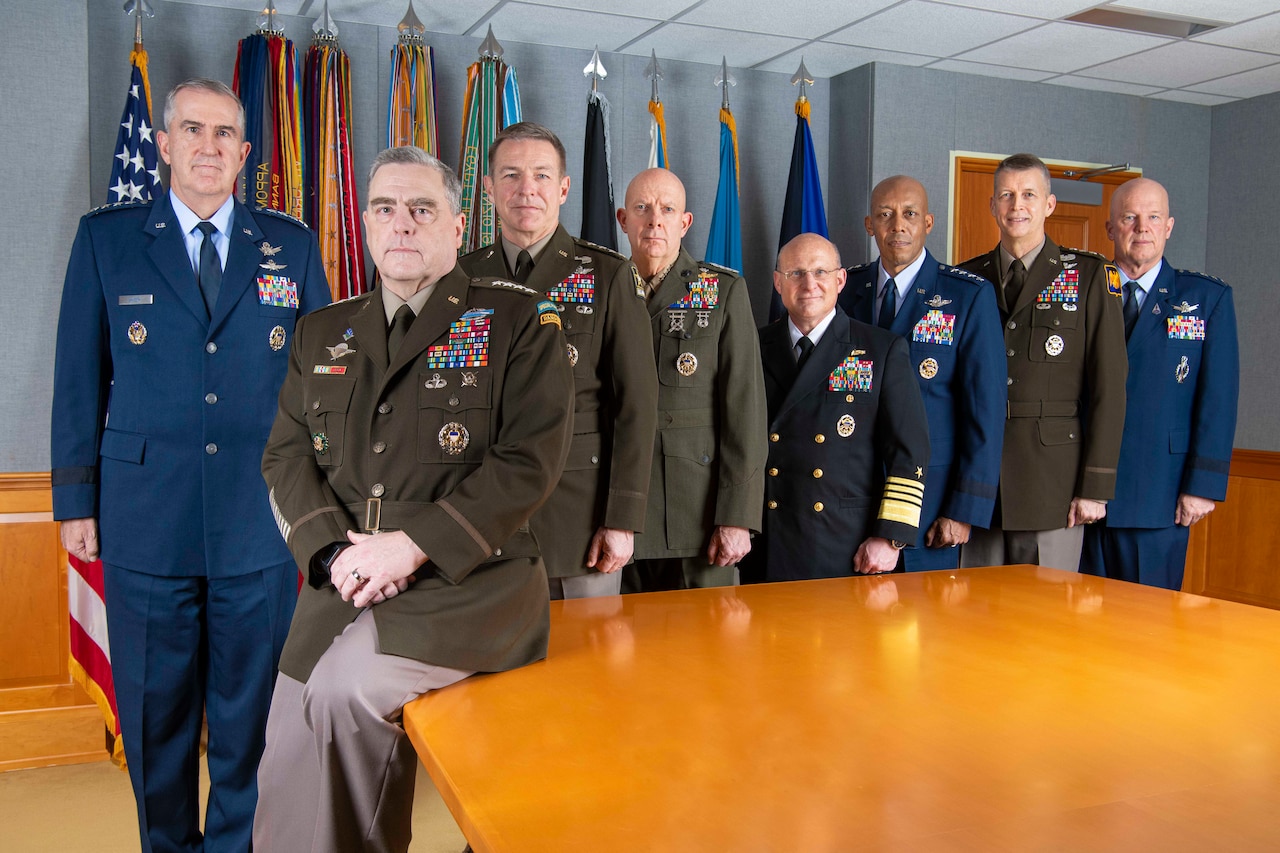
The memo was signed by: Army Gen. Mark A. Milley, the chairman of the Joint Chiefs of Staff; Air Force Gen. John E. Hyten, the Joint Chiefs vice chairman; Army Chief of Staff Gen. James C. McConnville; Marine Corps Commandant Gen. David C. Berger; Chief of Naval Operations Adm. Michael M. Gilday; Air Force Chief of Staff Gen. Charles Q. Brown; Chief of Space Operations Gen. John W. Raymond; and Chief of the National Guard Bureau Army Gen. Daniel R. Hokanson.
Pentagon chief of staff Kash Patel told Fox News that the Defense Department is working to ensure a seamless transfer of power to the Biden administration.
"When it comes to the defense of the country, there is no honeymoon period granted by our enemies for a new administration's learning curve," Patel wrote. "That is why, as the department's chief of staff and head of the transition, I ordered the DOD to fully cooperate with President-elect Joe Biden."
The department stands ready to welcome Biden administration officials and will take part in protecting the Inauguration. The National Guard will help defend the ceremony with 15,000 troops deployed to Washington to uphold the Constitution and rule of law, Patel said.
"Here at the Department of Defense, we will ensure that the new leaders of the world's most powerful military are fully prepared to assume the helm at noon [on] Jan. 20," Patel wrote. "Along with the entire department, I wish them the utmost success and am grateful for their service to the country. I'm sure leading the brave men and women who wear the cloth of our nation will be the greatest honors of their lives, as it has been for me."
Marine Corps recruits overcome an obstacle during the confidence course at Marine Corps Recruit Depot, San Diego, Jan. 12, 2021. Drill instructors keep a close watch to ensure the obstacles are being executed correctly and safely.
Army Maj. (Dr.) Douglas Ruhl, a surgeon at Madigan Army Medical Center, Joint Base Lewis-McChord, Wash., uses the COVID-19 airway management isolation chamber to perform a mastoidectomy, which removes a growth behind the eardrum, Jan. 5, 2021. This procedure requires drilling into the skull, creating bone dust and aerosolized droplets.
Army Pfc. Trenton Choate packs a food box at the Emergency Food Network warehouse in Fife, Wash., Jan. 6, 2021. The National Guard helped pack more than 8,000 emergency food boxes for the residents of Pierce County.
Air Force Staff Sgts. Allison Turner and Elizabeth Ciero, both assigned to the 88th Healthcare Operations Squadron, fill syringes with the COVID-19 vaccine in the Wright-Patterson Air Force Base, Ohio, Medical Center auditorium, Jan. 8, 2021. The airmen were preparing the syringes to vaccinate health care workers and other phase-1 airmen.
A NASA Armstrong Flight Research Center crewmember offloads supplies from a DC-8 for an emergency field hospital at Air Force Plant 42 in Palmdale, Calif., Jan. 11, 2021. Samaritan’s Purse, a charitable organization, has partnered with Lancaster Baptist Church, the city of Lancaster and AV Hospital to provide a 70-bed temporary field hospital to support COVID-19 patients.
Air Force Capt. Whay Cheng, a physician assigned to the 60th Medical Group, 60th Air Mobility Wing, Travis Air Force Base, Calif., tends to a patient at Arrowhead Regional Medical Center, Colton, Calif., Jan. 11, 2021. Defense Department medical teams integrated into California hospitals to provide medical support alongside hospital medical personnel in response to the COVID-19 pandemic.
Navy Petty Officer 1st Class Reyna Montue looks through a stadimeter aboard the aircraft carrier USS Theodore Roosevelt during operations in the Pacific Ocean, Jan. 12, 2021.
Jan. 13, 2021 | BY C. Todd Lopez , DOD News
A Ghost Fleet Overlord unmanned surface vessel, part of a partnership between the Defense Department's Strategic Capabilities Office and the Navy, recently traveled a distance of more than 4,700 nautical miles, almost entirely autonomously. Afterward, it participated in exercise Dawn Blitz where it again spent nearly all of its underway time operating autonomously.
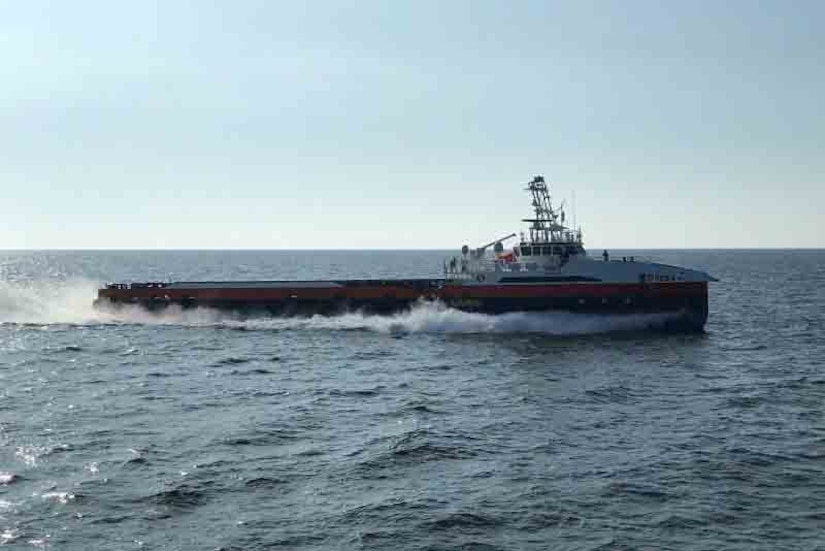
"This is a historic milestone for the program and the Navy. It represents what SCO does best: integrate mature technologies to accelerate service priorities and create new capabilities for our warfighters,'' Jay Dryer, director of the SCO said.
The Ghost Fleet Overlord program is part of an effort to accelerate the Navy's push to incorporate autonomous vessels within its fleet to better expand the reach of manned vessels. Autonomy includes more than just straight-line passage through large areas of the ocean; it also involves such things as collision avoidance and following the rules of the sea.
The Navy's efforts to adopt the unmanned vessel concept involve several classes of ships and an array of missions, such as offensive operations and intelligence, surveillance and reconnaissance with reduced risk to crew and legacy vessels. The Ghost Fleet Overlord program has demonstrated continued maturity in the autonomous USV concept since it stood up in late 2018.
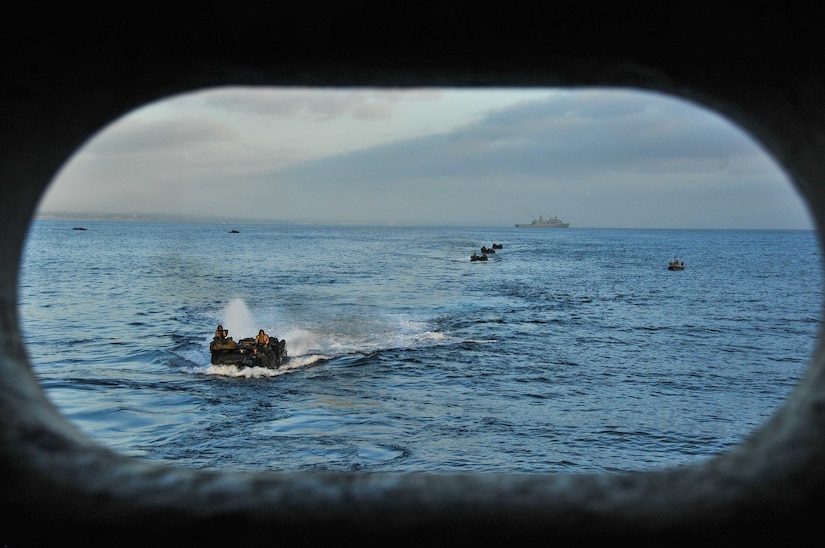
The most recent display of that maturity involved a USV traveling from the Gulf Coast to the coast of California, moving autonomously approximately 97% of the time. While the USV did have a crew on board, remote mission command and control for the trip was done from a remote location by sailors with Surface Development Squadron One.
One of the few times the USV was guided by its onboard crew was when it traversed the Panama Canal.
Optionally manned vessels provide a stepping stone to allow the Navy and its sailors to more easily become familiar with the concept of autonomous operations than what would be possible with a fully autonomous ship.
After arriving on the West Coast of the U.S., the Ghost Fleet Overlord USV participated in December's Dawn Blitz exercise with the Navy and Marine Corps. There, it successfully demonstrated compliance with international regulations for preventing collisions at sea, station keeping, loiter and transit missions. It was the first time a Ghost Fleet Overlord USV interacted with actual assets in the Navy fleet.
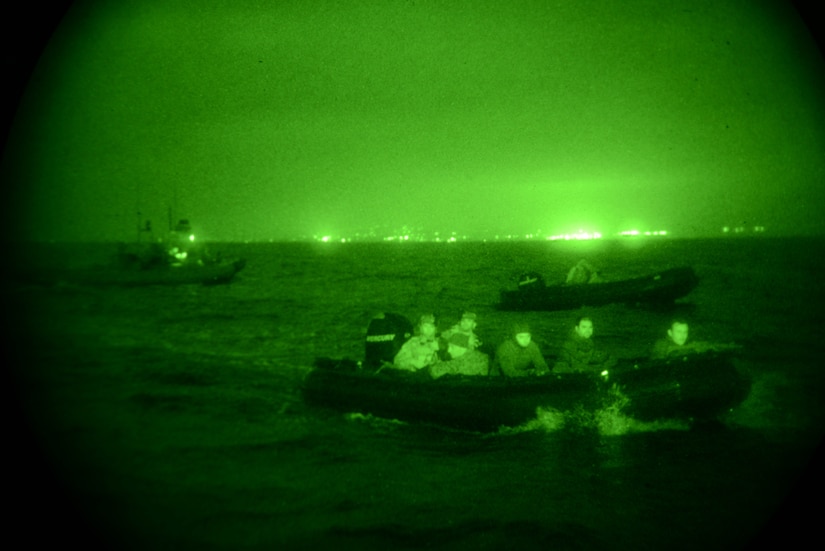
During its participation in Dawn Blitz, the Ghost Fleet Overlord USV operated autonomously for more than 130 hours and traversed roughly 950 nautical miles — accounting for approximately 98% of its underway time.
The Ghost Fleet Overlord program has been an accelerant to the Navy's adoption of unmanned surface vessels, enabling it to more rapidly bring such vessels into the fleet.
"Our close partnership with SCO on the Overlord program is accelerating the technology demonstration, CONOPs development and operational command and control of unmanned surface vessels in direct alignment with the Navy's plans," CAPT Pete Small, Navy Program Manager for USVs, said.
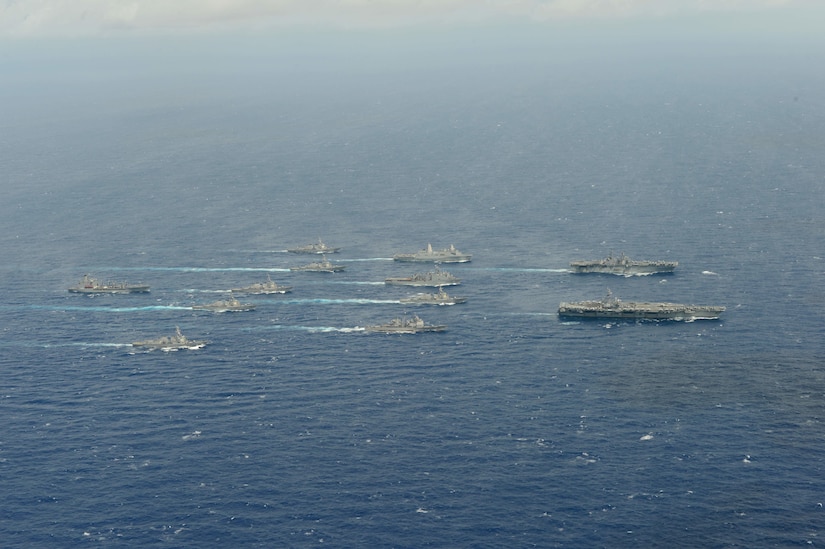
To help the Navy advance its goal to incorporate autonomous vessels within the fleet, the SCO's Ghost Fleet Overlord program has taken commercial ocean-going vessels and integrated both commercially-available and government-provided equipment on board to create unmanned surface vessels. Phase II of the Ghost Fleet Overlord program, which focuses on the integration of government-furnished command-and-control systems and payloads and more complex and challenging naval operations experimentation, began in September. The SCO will transition its two Ghost Fleet Overlord prototypes to the Surface Development Squadron One by the end of fiscal year 2021. The Navy is currently acquiring two more Ghost Fleet Overlord prototypes to accompany the two SCO built to continue unmanned systems testing and fleet experimentation.
Soldiers assigned to the 3rd U.S. Infantry Regiment, known as “The Old Guard,” conduct modified military funeral honors for retired Army Maj. Gen. Donald C. Hilbert at Arlington National Cemetery, Va., Jan. 11, 2021. Hilbert was selected to command The Old Guard in 1977, and held several other important command and staff positions during his military service.
Acting Defense Secretary Chris Miller talks with a service member during a visit to Fort Campbell, K.Y., Jan. 12, 2021, where he and Senior Enlisted Advisor to the Chairman Ramón "CZ" Colón-López recognized high-performing troops.